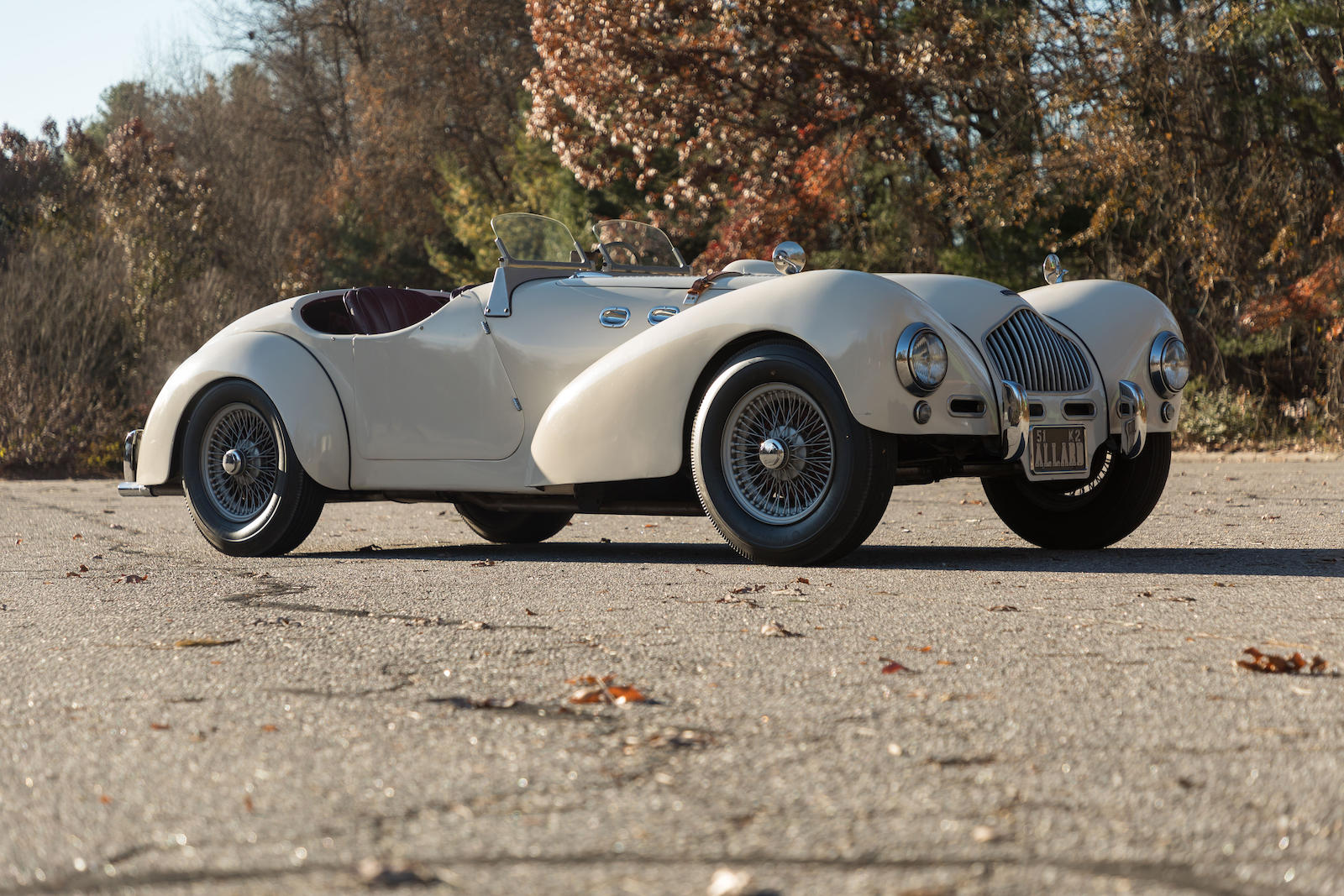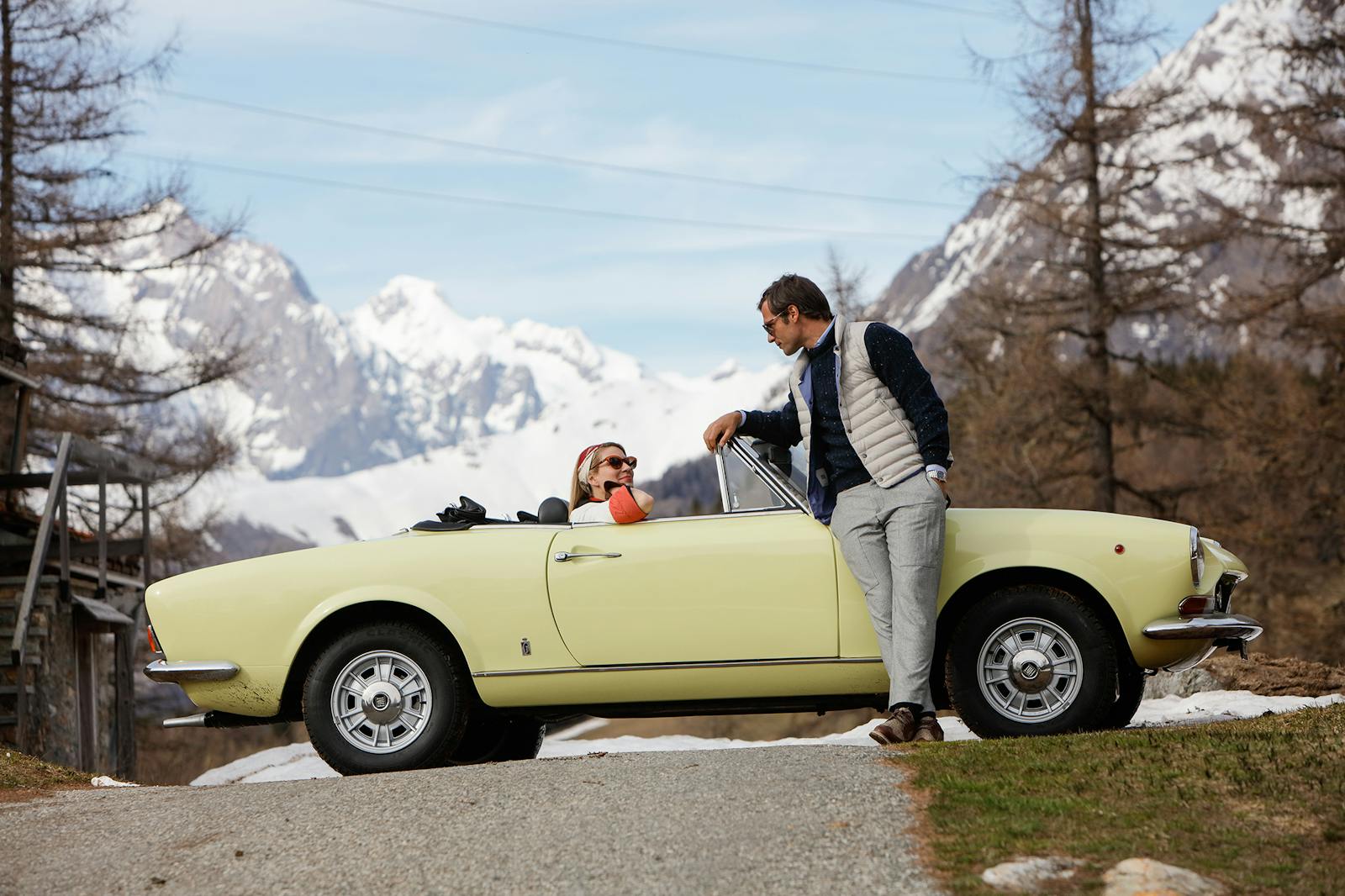6 bizarre, rare cars headed to the 2020 Amelia Island auctions
The annual Amelia Island auctions typically bring a bunch of great Porsches, some mouth-watering classic Ferraris, and a healthy serving of historically significant race cars. They also attract some seriously unusual stuff, the kind of cars that make you scratch your head and say “what is that?”
We sifted through the run lists and found these six weird, wonderful, and very rare cars you probably won’t see coming up for sale again any time soon.
1951 Allard K2 Roadster

Bonhams, Lot 146
Presale estimate: $85,000–$135,000
Allards were some of the fastest sports cars you could buy in the early 1950s. They were rarely pretty and they were always crude, but the combination of a lightweight British chassis and body with a big, thumping American V-8 (usually from Ford, Mercury, Chrysler or Cadillac) was a winning one. A decade before he built the Cobra, Carroll Shelby was already winning races in an Allard, while back across the Atlantic Allard finished third at Le Mans in 1950 and even won the Monte Carlo Rally outright in 1952.
The cycle-fender J2 and J2-X are the most famous Allards, but the little operation sold over a dozen different models before shutting down at the end of the 1950s. The K series is essentially a tourer version of the J with an extended wheelbase. The bodywork is more streamlined as well, but a K-series car really looks like a J-series that got fat. The K2 came out in 1950 and, like many Allards, the one up for sale in Amelia was shipped to the U.S. without an engine. It currently has a 303-cubic-inch Oldsmobile Rocket 88 engine, which is unusual in an Allard. It’s unclear whether this is the engine originally fitted; according to Bonhams, it “has been in the car for quite a long time.”
Allard built a little over 100 K2s in total. This one also has an automatic transmission, which seems odd on a car most people associate with the race track. Then again, Allards are supposedly a handful to drive even before you worry about changing gear, so automatics aren’t unheard of. Better to keep both hands on the wheel.
1936 Adler Trumpf Junior Sport

Bonhams, Lot 173
Presale estimate: $20,000–$25,000
Founded in Frankfurt, Adler (the German word for eagle) started out making bicycles in the nineteenth century then moved onto motorcycles, typewriters, and cars. Adler built large cars with six- and eight-cylinder engines but the “Trumpf Junior,” despite what you might imagine when hearing the name, wasn’t a car for rich-kid, Don Junior-types. The Trumpf was Adler’s line of small family cars, and it even has front-wheel drive.
1973 BMW 2002 Targa

Gooding & Company, Lot 72
Presale estimate: $40,000–$50,000
A BMW 2002 is a cool, fun, practical, and reasonably affordable classic, but there isn’t anything odd or unusual about it. Look closely at this one, though, and you’ll see the funky targa roof by Karosserie Baur of Stuttgart. Founded in 1910, Baur has built bodies for several companies and even did some of the final assembly on the BMW M1. It’s mostly known for open-top conversions of other Bimmers like the 2002 as well as the E21, E30, and E36 3 Series. According to Gooding & Company, Baur did just 2317 targa versions on the 2002 platform, and they never originally sold in the U.S.
1968 Ferves Ranger

RM Sotheby’s, Lot 206
Presale estimate: $40,000–$50,000
Underneath the Ranger’s utilitarian yet adorable bodywork is a mixture of Fiat 500 and 600 parts. Four-wheel drive was available, but the sheer tininess of this car along with its lack of overhangs means that even two-wheel-drive models like this can probably navigate some rough terrain. According to RM Sotheby’s there are only about 50 Rangers left, but a nearly identical car crossed the block in Monterey last year. It had a $30,000–$40,000 estimate but sold for $196,000. Cute sells.
1952 Muntz Jet

RM Sotheby’s, Lot 235
Presale estimate: $100,000–$125,000
The Muntz Jet started out as a sports car built by Frank Kurtis in Glendale, California, at the end of the 1940s. Kurtis sold the operation to a fellow named Earl Muntz, aka “Madman,” a businessman known for the wacky alter ego he used in television commercials. After an initial batch built at the same California facility, Muntz moved production to Illinois.
Compared to the original Kurtis, the Muntz Jet has a longer wheelbase and rear seats but still has an aluminum body and a big V-8 (first sourced from Cadillac and then from Lincoln). Muntz claimed that he built nearly 400 cars, but most sources estimate that the real number was around 200. He lost money on every single one.
Extremely expensive when new, the Muntz Jet tried to justify its price tag with outrageous paint jobs, unusual options like built-in cocktail bars, and upholstery so garish an Arab oil sheikh might call it “a little much.” This one, finished in purple over iguana-skin-patterned white vinyl, was restored in the early 1990s and has a rare setup of triple carbs and Edmunds heads. (No cocktail bar, though.) It is “thought to have been owned by Grace Kelly,” but that’s unconfirmed. Barrett-Jackson sold it way back in 2001 for $57,200.
1968 Marcos 1500GT

Bonhams, Lot 156
Presale estimate: $50,000–$60,000
More well known in the UK than in the states, Marcos (a portmanteau of founders Gem Marsh and Frank Costin’s last names) built some alarmingly ugly cars. Check out the Mini-Marcos at your peril. The GT, though, is a stunner.
It’s as rare as it is cool, but what really makes it an oddball is the plywood (yes, plywood) chassis. Frank Costin had worked on the De Havilland Mosquito, which had a mostly wood frame, during WWII and he applied that concept to an automobile. In those days before fancy schmancy carbon fiber, a bonded plywood frame offered both rigidity and light weight. Unfortunately, it was also expensive and Marcos switched to a cheaper, good-ol’-fashioned steel chassis in 1969. Ironically, the steel chassis were more prone to failure and today people prefer the wooden ones.
If you’ve heard of Marcos at all you may know the Volvo-powered 1800 model or the 3000GT with its Ford V-6, but there were also cars with English Ford four-cylinder power. According to Bonhams, this restored GT is one of 82 of these wooden wonders built with a 1500-cc Ford Kent engine and one of just eight brought to U.S. shores. And according to David Mensh, a restorer and Marcos expert, there are only three known to exist in North America.
Like this article? Check out Hagerty Insider, our e-magazine devoted to tracking trends in the collector car market.

